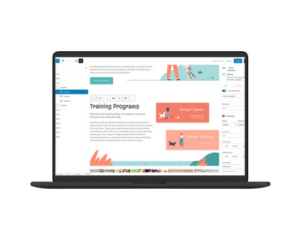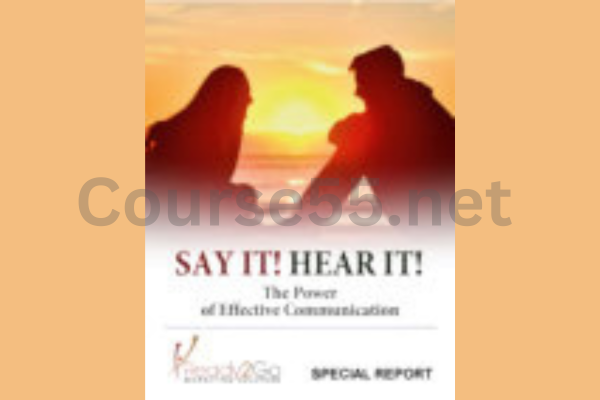-
×
 Membership Method 2018 by Chris Luck
1 × $30.80
Membership Method 2018 by Chris Luck
1 × $30.80 -
×
 Ultimate Mobile Home Bootcamp MHU by Steve Case and Corey Donaldson
1 × $30.80
Ultimate Mobile Home Bootcamp MHU by Steve Case and Corey Donaldson
1 × $30.80 -
×
 Platinum Program Secrets By Elizabeth Purvis
1 × $30.80
Platinum Program Secrets By Elizabeth Purvis
1 × $30.80 -
×
 Growing Your Own Herbal Medicine By Chanchal Cabrera
1 × $30.80
Growing Your Own Herbal Medicine By Chanchal Cabrera
1 × $30.80 -
×
 Jade Egg Mastery Online Course By Saida Desilets
1 × $30.80
Jade Egg Mastery Online Course By Saida Desilets
1 × $30.80 -
×
 Create A Profitable Online Store Deluxe Package by Steve Chou
1 × $30.80
Create A Profitable Online Store Deluxe Package by Steve Chou
1 × $30.80 -
×
 Creative Film Academy By Jose Javy Ferrer
1 × $30.80
Creative Film Academy By Jose Javy Ferrer
1 × $30.80 -
×
 Social Media Marketing Agency by Tai Lopez
1 × $30.80
Social Media Marketing Agency by Tai Lopez
1 × $30.80 -
×
 Generate Made Easy By Jonathan Jernigan
1 × $62.00
Generate Made Easy By Jonathan Jernigan
1 × $62.00 -
×
 Premium Forex Trading
1 × $30.80
Premium Forex Trading
1 × $30.80 -
×
 Spirit Junkie Masterclass By Gabrielle Bernstein
1 × $30.80
Spirit Junkie Masterclass By Gabrielle Bernstein
1 × $30.80 -
×
 50K eCom Profits With Etsy and Shopify 2018 by Gerald Soh
1 × $30.80
50K eCom Profits With Etsy and Shopify 2018 by Gerald Soh
1 × $30.80 -
×
 New York Super Conference 2016 Videos
1 × $30.80
New York Super Conference 2016 Videos
1 × $30.80 -
×
 NJ Foolish Wisdom By Joseph Riggio
1 × $30.80
NJ Foolish Wisdom By Joseph Riggio
1 × $30.80 -
×
 Create Your Greatest Life by Les Brown
1 × $30.80
Create Your Greatest Life by Les Brown
1 × $30.80 -
×
 8 Day Process - Living on Light - Online
1 × $30.80
8 Day Process - Living on Light - Online
1 × $30.80 -
×
 Awakening Osiris By Normandi Ellis
1 × $6.00
Awakening Osiris By Normandi Ellis
1 × $6.00 -
×
 Advanced Seminar by Market Geometry
1 × $30.80
Advanced Seminar by Market Geometry
1 × $30.80 -
×
 The Self Publishing by Raman
1 × $30.80
The Self Publishing by Raman
1 × $30.80 -
×
 Who’s Mailing What - Ultra Marketing Swipe File
1 × $30.80
Who’s Mailing What - Ultra Marketing Swipe File
1 × $30.80 -
×
 Healed By Katrina Ruth
1 × $30.80
Healed By Katrina Ruth
1 × $30.80 -
×
 SEO Traffic Hospital by Jimmy Kelley
1 × $30.80
SEO Traffic Hospital by Jimmy Kelley
1 × $30.80 -
×
 Dropship University by Cameron Conrad
1 × $30.80
Dropship University by Cameron Conrad
1 × $30.80 -
×
 HVAC and Refrigeration Practice Problems for the Mechanical PE Exam Book By Mechanical PE Exam Prep
1 × $62.00
HVAC and Refrigeration Practice Problems for the Mechanical PE Exam Book By Mechanical PE Exam Prep
1 × $62.00 -
×
 Tradeonix Trading System by Russ Horn
1 × $30.80
Tradeonix Trading System by Russ Horn
1 × $30.80 -
×
 Cooperative Lease Options by Wendy Patton
1 × $30.80
Cooperative Lease Options by Wendy Patton
1 × $30.80 -
×
 Ecom Insiders By James Beattie
1 × $30.80
Ecom Insiders By James Beattie
1 × $30.80 -
×
 The Realistic Trader - Crypto Currencies by Siam Kidd
1 × $30.80
The Realistic Trader - Crypto Currencies by Siam Kidd
1 × $30.80 -
×
 Basics & Beyond course By Maxwellzone
1 × $23.00
Basics & Beyond course By Maxwellzone
1 × $23.00 -
×
 Critical Systems Engineering By Mechanical PE Exam Prep
1 × $62.00
Critical Systems Engineering By Mechanical PE Exam Prep
1 × $62.00 -
×
 Super Seminar 2013 by Jay Abraham
1 × $30.80
Super Seminar 2013 by Jay Abraham
1 × $30.80 -
×
 Manifestation software by Peter Schenk
1 × $30.80
Manifestation software by Peter Schenk
1 × $30.80 -
×
 How to Become a Successful Mobile Home Investor by Byron Sellers & Sharnice Williams
1 × $30.80
How to Become a Successful Mobile Home Investor by Byron Sellers & Sharnice Williams
1 × $30.80 -
×
 Million Dollar Coaching by Glenn Livingston
1 × $30.80
Million Dollar Coaching by Glenn Livingston
1 × $30.80 -
×
 LinkedIn Training: Linkfluencer - 3 Steps To LinkedIn Mastery By Michelle Shakeshaft
1 × $30.80
LinkedIn Training: Linkfluencer - 3 Steps To LinkedIn Mastery By Michelle Shakeshaft
1 × $30.80 -
×
 Real Estate Investor Blueprint Course By Chris Goff
1 × $30.80
Real Estate Investor Blueprint Course By Chris Goff
1 × $30.80
Say It! Hear It! – Special Report By Ready2Go Marketing Solutions
$299.00 Original price was: $299.00.$7.70Current price is: $7.70.
SKU: C55net.44406oCzb8pG9
Category: Download
Tags: Hear It, Ready2Go Marketing Solutions, Say It, Special Report
Say It! Hear It! – Special Report By Ready2Go Marketing Solutions – Immediate Download!
Content Proof:
![]()
Ready2Go Marketing Solutions’ Special Report: “Say it! Hear it!”
Many people think of communication as just speaking, but it’s actually a complex ballet of comprehension and expression. But Ready2Go Marketing Solutions’ “Say it! Hear it! – Special Report” goes deeper into the subtleties of good communication, emphasizing that it’s not only about getting your point over; it’s also about making sure it’s understood. People who want to improve their communication abilities should use this study as a guide, especially in the fast-paced world of today where connection and clarity are crucial. The paper lays the groundwork for significant advancements in interpersonal and professional relationships by looking at nonverbal clues and active listening in addition to spoken language.
The Multi-Faceted Nature of Communication
Understanding Communication Beyond Words
In a world saturated with information, the importance of clear communication cannot be overstated. The report emphasizes that communication is fundamentally a two-way street, where the effectiveness hinges not only on how a message is conveyed but also on how it is received. It highlights an astonishing statistic: up to 55% of meaning is derived from non-verbal cues, which include body language and vocal tone. This reveals that the unspoken elements of communication can often overshadow the words themselves.
Imagine a scenario where a manager delivers instructions to their team. If the manager’s body language suggests impatience or disinterest, the team is likely to feel undervalued, leading to a disconnect and decreased productivity. On the other hand, if the manager engages openly, maintaining eye contact and using gestures to reinforce their message, the team is more likely to feel motivated and aligned with the objectives. This intricate interplay ***ween verbal and non-verbal communication illustrates that effective exchange transcends mere words.
Barriers to Effective Communication
Despite our innate desire to connect, numerous obstacles can impede communication. The report outlines factors such as misunderstandings, biases, and preconceived notions that can distort the intended message. For instance, a listener’s past experiences may shape their interpretation of the speaker’s words, leading to miscommunication. Often, assumptions about what the speaker means can cloud the interaction, diverting attention away from the core message.
A practical approach involves acknowledging these barriers and actively working to overcome them. Cultivating a mindset that encourages openness and curiosity can pave the way for clearer exchanges. Recognizing that both parties bring their unique perspectives to the conversation helps foster a more inclusive dialogue. For positive communication, a delicate balance must be struck ***ween articulation and comprehension, ensuring that both parties feel heard and understood.

The Practice of Active Listening
Prioritizing Involvement
Active listening is one of the fundamentals of good communication that the report emphasizes. This idea goes beyond just listening to what is being said; it necessitates active interaction with the speaker. According to the report, people should talk less and listen carefully to others. Focusing intently on the speaker, comprehending what they are saying, and giving a considered response are all components of active listening.
Take, for example, a friend telling you about a difficult day. Active listening is letting them finish speaking before responding, as opposed to planning your answer as they go along. This method fosters a safe environment for discussing ideas and feelings while also fortifying bonds with others. People are more likely to respond when they feel heard, which promotes an open dialogue cycle.
Methods for Improving Active Listening
The report offers helpful strategies for improving listening abilities, like paraphrasing and paying attention to nonverbal cues. By summarizing the speaker’s ideas to ensure understanding, paraphrasing shows that you are actively processing their information. For instance, you may say, “So, if I understand correctly, you’re suggesting that we need to allocate more resources to meet the deadline?” in response to your colleague outlining a project difficulty.
Furthermore, paying attention to nonverbal cues like posture, gestures, and facial expressions can greatly deepen the conversation. A deeper comprehension of the story being told is made possible by acknowledging that communication is a complex web of both verbal and nonverbal components. Creating a communication environment where speaking and listening coexist peacefully should be the ultimate objective.
Practical Steps to Improve Communication Skills
Techniques for Effective Speaking
Enhancing communication skills requires a commitment to continuous improvement. Here are some practical steps individuals can take to refine their speaking abilities:
- Practice Clarity: Use concise language and avoid jargon to ensure your message is easily understood. Studies show that clarity can enhance retention and comprehension, leading to more effective exchanges.
- Use Visual Aids: Incorporate visuals where possible, as they can facilitate understanding. Infographics or charts can help illustrate complex data, making it more digestible for the audience.
- Seek Feedback: After delivering a message, solicit feedback to gauge the effectiveness of your communication. This iterative process helps refine your skills over time.
- Be Mindful of Tone: Understand that vocal tone can shape how your message is received. A warm and inviting tone can foster receptivity, whereas a cold, abrupt tone may lead to defensiveness or misunderstanding.
Cultivating Connection in Conversations
To forge deeper connections, one must strive to create an environment that promotes dialogue. Here are additional strategies:
- Open-Ended Questions: Encourage dialogue by asking questions that require more than a yes or no response. This invites the other person to share their thoughts and feelings, enriching the conversation.
- Empathy and Compassion: Approach interactions with empathy, understanding that behind every message is a person with their own experiences and emotions. This empathetic approach can dissolve barriers and facilitate authentic communication.
- Body Language Awareness: Be conscious of your body language while communicating. Open gestures, a friendly smile, and attentive posture can signal receptivity and encourage the speaker to share more.
In conclusion
Ready2Go Marketing Solutions’ “Say it! Hear it! – Special Report” captures the essence of successful communication in both personal and professional contexts. The report gives people the skills they need to participate meaningfully by highlighting the complex structure of communication and acknowledging the important roles of non-verbal clues and active listening. For anyone looking to close the gap between speaking and comprehending, it is a call to action. Whether at the dinner table or in the workplace, the capacity to communicate effectively can ultimately result in more beneficial partnerships. The first step to changing one’s communication journey may be to engage with the principles presented in this study.
Frequently Asked Questions:
Business Model Innovation: We use a group buying approach that enables users to split expenses and get discounted access to well-liked courses. Despite worries regarding distribution strategies from content creators, this strategy helps people with low incomes.
Legal Aspects: There are many intricate questions around the legality of our actions. There are no explicit resale restrictions mentioned at the time of purchase, even though we do not have the course developers’ express consent to redistribute their content. This uncertainty gives us the chance to offer reasonably priced instructional materials.
Quality Control: We make certain that every course resource we buy is the exact same as what the authors themselves provide. It’s crucial to realize, nevertheless, that we are not authorized suppliers. Therefore, our products do not consist of:
– Live coaching calls or sessions with the course author.
– Access to exclusive author-controlled groups or portals.
– Membership in private forums.
– Direct email support from the author or their team.
We aim to reduce the cost barrier in education by offering these courses independently, without the premium services available through official channels. We appreciate your understanding of our unique approach.
Be the first to review “Say It! Hear It! – Special Report By Ready2Go Marketing Solutions” Cancel reply
You must be logged in to post a review.


Reviews
There are no reviews yet.